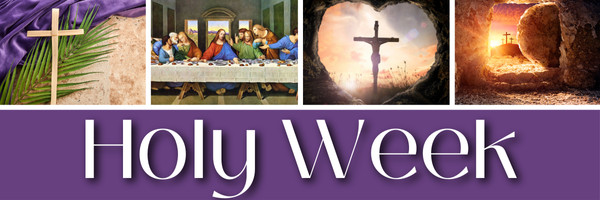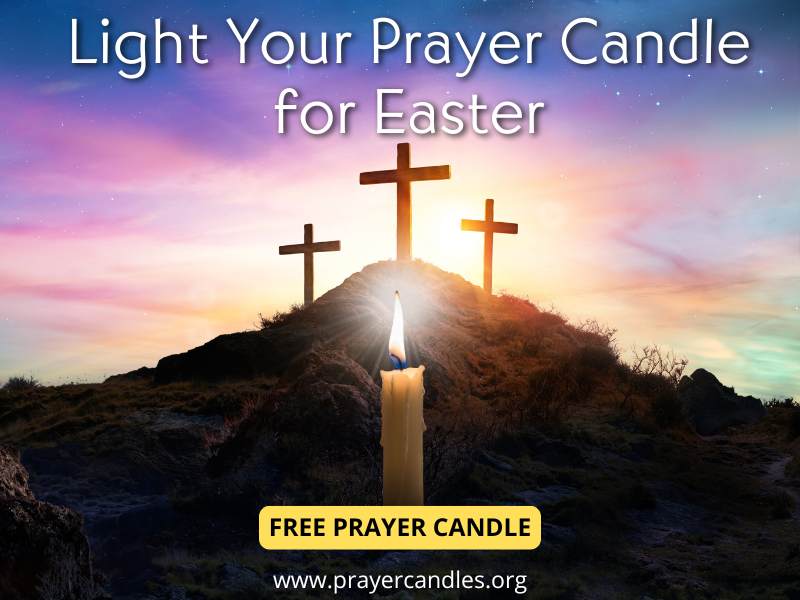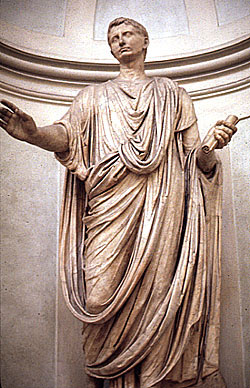We ask you, urgently: don't scroll past this
Dear readers, Catholic Online was de-platformed by Shopify for our pro-life beliefs. They shut down our Catholic Online, Catholic Online School, Prayer Candles, and Catholic Online Learning Resources essential faith tools serving over 1.4 million students and millions of families worldwide. Our founders, now in their 70's, just gave their entire life savings to protect this mission. But fewer than 2% of readers donate. If everyone gave just $5, the cost of a coffee, we could rebuild stronger and keep Catholic education free for all. Stand with us in faith. Thank you.Help Now >
The Vacancy of the Holy See (Papal Interregnum)
FREE Catholic Classes
The period between the death or resignation of a Pope and the election of his successor, when the See of Peter is vacant, is called the Interregnum. This Latin term means between the reign (of one Pope and another). It is a period governed by papal law, which admits of no changes to Church governance, or to the spiritual or material patrimony of St. Peter, save the election of his successor.
For 900 years, electing a pope has been the prerogative of the College of Cardinals meeting in conclave. The cardinals meet in Rome 15 to 20 days after the death of a pope and pick a successor from among themselves in secret balloting. Pope John Paul II wrote the rules for electing his successor.
When a Pope Dies
Regardless of the circumstances, when a Pope dies certain procedures specified in Church law, specifically the Apostolic Constitution Universi Dominici Gregis, must be followed. First among these is the certification that he is truly dead. This task falls to the Camerlengo of the Holy Roman Church.
In the presence of the Master of Papal Liturgical Ceremonies, the Cleric Prelates of the Apostolic Camera, and the Secretary and the Chancellor of the Apostolic Camera, the Camerlengo ascertains that the Pope is dead. Naturally, this could require the assistance of medical personnel. Having made this determination, the Chancellor of the Apostolic Camera draws up the official death certificate. The Camerlengo then seals the Pope's bedroom and study. Its unsealing and the disposition of its contents must wait the election of his successor. If the deceased Pope has left a will naming an executor for his personal belongings, the executor is responsible for faithfully carrying out the will, and for giving an account of his service to the new Pope.
 Having certified that the Pope is dead, the Camerlengo notifies the Archpriest of the Vatican Basilica, and the Cardinal Vicar of the Diocese of Rome. It is the Cardinal Vicar who publicly announces to the City of Rome that its Bishop has died. Between the Camerlengo and the Prefect of the Papal Household, the Dean of the College of Cardinals must be informed. The Dean, in turn, officially notifies the other Cardinals, and calls them to Rome. He also notifies the diplomatic corps accredited to the Holy See, and the Heads of State of the various nations. The Camerlengo must must also take custody of the Apostolic Palaces of the Vatican, the Lateran Palace and Castel Gondolpho, that is, the various personal quarters of the Pope.
Having certified that the Pope is dead, the Camerlengo notifies the Archpriest of the Vatican Basilica, and the Cardinal Vicar of the Diocese of Rome. It is the Cardinal Vicar who publicly announces to the City of Rome that its Bishop has died. Between the Camerlengo and the Prefect of the Papal Household, the Dean of the College of Cardinals must be informed. The Dean, in turn, officially notifies the other Cardinals, and calls them to Rome. He also notifies the diplomatic corps accredited to the Holy See, and the Heads of State of the various nations. The Camerlengo must must also take custody of the Apostolic Palaces of the Vatican, the Lateran Palace and Castel Gondolpho, that is, the various personal quarters of the Pope.
After the Pope's body has been properly prepared it is taken to the Sistine Chapel for the private veneration of the Papal Household and the Cardinals. Afterwards it is taken to the Patriarchal Basilica of the Vatican, St. Peter's, where it will lie in state.
Mourning the Pope
An official mourning period of nine days, called the Novendiales, begins when a Pope dies. The day of death is counted as the first day of this period. On each of these nine days the Mass of each Cardinal must be a funeral rite for the Pope.
Indeed, the Missal provides a Mass formula "For a Deceased Pope" which can be used by any priest during this time, if the liturgical season permits.

Prior to his burial, and following private rites in the Sistine Chapel, the Pope is laid in state in St. Peter's Basilica, permitting the faithful to pay their respects. Between the fourth and sixth day after his death (that is, on the 5th, 6th or 7th day of the mourning period) a Solemn Funeral is celebrated in St. Peter's Basilica by the Dean of the College of Cardinals, with the other Cardinals. The deceased Pope is then buried, most likely in the crypt of St. Peter's. The mourning period then continues until the nine days are completed.
Before the Conclave
The days after the funeral and before the Conclave begins offers the cardinals an opportunity to discuss the state of the Church. They may not do so in a manner which constitutes politicking or electioneering for office or for votes.
"The Cardinal electors shall ... abstain from any form of pact, agreement, promise or other commitment of any kind which could oblige them to give or deny their vote to a person or persons" (UDG 81)
Nor may the Cardinals,
"enter into any stipulations, committing themselves of common accord to a certain course of action should one of them be elevated to the Pontificate" (UDG 82).
Such promises would, in fact, be null and void (ibid).
There may, however, be "during the period in which the See is vacant, the exchange of views concerning the election" (UDG 81)
If despite the solemn law of the Church, and the penalty of automatic excommunication for selling or trading votes, the validity of the election itself shall not be in doubt. Universi Dominici Gregis states,
79. If God forbidin the election of the Roman Pontiff the crime of simony were to be perpetrated, I decree and declare that all those guilty thereof shall incur excommunication latae sententiae. At the same time I remove the nullity or invalidity of the same simoniacal provision, in order that as was already established by my Predecessors the validity of the election of the Roman Pontiff may not for this reason be challenged.
Entry into the Conclave
The day on which the Conclave begins is ordinarily to be the fifteenth day after the death of a Pope, the 16th day of the Interregnum. However, the College of Cardinals is given the faculty by Universi Dominici Gregis to defer its beginning "for serious reasons" up to the 20th day after death (21st day of the Vacancy). It must begin on or before that day.
On the morning of the first day on which the Conclave is to begin, the Cardinal Electors gather in St. Peter's Basilica, or another place as may be determined by the College, to celebrate a Votive Mass for the Election of the Pope.
In the afternoon they gather in the Pauline Chapel of the Apostolic Palace. Invoking the assistance of the Holy Spirit with the Veni Creator Spiritu, they process to the Sistine Chapel. There they take a solemn oath to observe the prescriptions of the law governing the election, to observe the secrecy obliged, to not assist any secular power which may try to influence the election. The also swear that if elected they will faithfully carry out the Petrine Office, and protect the spiritual and temporal rights of the Holy See.
After the last Cardinal Elector has taken the oath, the Master of Papal Liturgical Ceremonies gives the order Extra omnes, commanding everyone not authorized to remain in the Conclave to leave the Chapel. Besides the Electors, only the Master of Papal Liturgical Ceremonies and the ecclesiastic chosen beforehand to give a meditation to the Cardinals on the seriousness of their duties, remains. When the meditation has been concluded, both of these men depart the Sistine Chapel.
After the Cardinals recite prayers provided in the proper Ordo for the Conclave, the Cardinal Dean inquiries if any Electors have questions concerning the norms and procedures. Once these have been clarified, by a majority decision of the Cardinals the election can proceed.
Only the Cardinal Electors may remain in the Sistine Chapel during the actual voting, which by law is from after the ballots have been distributed until after they have been tabulated and checked. Outside of the time of actual voting, the Secretary of the College, the Master of Papal Liturgical Ceremonies and the 2 Masters of Ceremonies are present to assist the Conclave.
On this first day of the Conclave, only one ballot is permitted. On the other days of the Conclave, two ballots are permitted in the morning session and two are permitted in the afternoon session.
Election Procedure
Voting Procedure
There are three phases to the election process. They are:
1) Pre-Scrutiny, during which ballots are prepared and distributed.
2) Scrutiny, during which the ballots are collected and counted.
3) Post-Scrutiny, during which the ballots are counted, checked and burned.
1. Pre-Scrutiny
During the Pre-Scrutiny the ballots are prepared and distributed, and, 9 Electors are chosen by lot to serve as 3 Scrutineers, 3 Infirmarii and 3 Revisers.
The Scrutineers are three Cardinal Electors chosen by lot to gather and count the ballots. They stand at the altar as the Electors come up individually to deposit their votes. One of them also collects the votes of those present who are not physically able to come up to the altar. Afterwards, sitting at a table in front of the altar they tabulate the ballots to determine if an election has occurred.
The Infirmarii are three Cardinal Electors chosen by lot to take ballots to Electors who although within the enclosure of the Conclave are too sick to be present in the Sistine Chapel. They take with them a locked box which, having been shown to the other Electors to be empty, receives the votes of the infirm. They return it unopened to the Scrutineers.
The Revisers are 3 Cardinal Electors chosen by lot to check the ballot count and the notes of the Scrutineers to determine if the tabulation of the ballots was carried out exactly and faithfully.
2. Scrutiny
After all ballots are in, including those brought from the sick by the Infirmarii, the 1st Scrutineer shakes the receptacle several times to mix the ballots. Then the 3rd Scrutineer counts them, placing them in a second, empty, receptacle. If the number of ballots does not equal the number of electors, they are burned, and a second vote taken immediately. Otherwise, the Scrutineers proceed to tabulate the vote.
Sitting at a table in front of the altar, the 1st Scrutineer silently reads the name on a ballot, passes it to the 2nd Scrutineer who does likewise, and then passes it to the 3rd Scrutineer, who reads the name aloud and then writes it down. Each Elector also writes it down on a sheet provided for this purpose. The ballot is then pierced with a needle through the word eligo (I elect) and placed on a thread for security.
When all ballots have been read the ends of the thread are tied in a knot and the ballots are placed in a receptacle on one end of the table.
3. Post-Scrutiny
The Scrutineers tabulate the vote count they recorded by individuals receiving votes. They do this on a separate sheet of paper from that on which the vote count was first made. The Revisers then verify the results.
Special Provisions
In the case of difficulty electing, understood as three days of voting without an election, voting is to be suspending for up to, but not exceeding, one full day, to allow prayer and discussion. Voting is then resumed for seven ballots. Such suspensions followed by seven ballots may occur three times (UDG 74).
After the third round of seven ballots the provisions of paragraph 75 may be invoked by an absolute majority vote of the Electors. This would allow for election by an absolute majority, instead of two-thirds, or, voting between the two top vote recipients of a previous ballot with election by an absolute majority.
Apostolic Constitution Universi Dominici Gregis
74. In the event that the Cardinal electors find it difficult to agree on the person to be elected, after balloting has been carried out for three days in the form described above (in Nos. 62ff) without result voting is to be suspended for a maximum of one day in order to allow a pause for prayer, informal discussion among the voters, and a brief spiritual exhortation given by the senior Cardinal in the Order of Deacons. Voting is then resumed in the usual manner, and after seven ballots, if the election has not taken place, there is another pause for prayer, discussion and an exhortation given by the senior Cardinal in the Order of Priests. Another series of seven ballots is then held and, if there has still been no election, this is followed by a further pause for prayer, discussion and an exhortation given by the senior Cardinal in the Order of Bishops. Voting is then resumed in the usual manner and, unless the election occurs, it is to continue for seven ballots.
75. If the balloting does not result in an election even after the provisions of No. 74 have been fulfilled, the Cardinal electors shall be invited by the Camerlengo to express an opinion about the manner of proceeding. The election will then proceed in accordance with what the absolute majority of the electors decides.
Nevertheless, there can be no waiving of the requirement that a valid election takes place only by an absolute majority of the votes or else by voting only on the two names which in the ballot immediately preceding have received the greatest number of votes; also in this second case only an absolute majority is required.
76. Should the election take place in a way other than that prescribed in the present Constitution, or should the conditions laid down here not be observed, the election is for this very reason null and void, without any need for a declaration on the matter; consequently, it confers no right on the one elected.
The Results
When the Scrutineers have tabulated the results, and the Revisers have verified them, they are announced. A super majority of two-thirds of those actually voting is required to elect, unless the special provisions for a difficult election have been invoked.
No Election
If less than two-thirds of the votes have been cast for the same person, or less than the majority required by the special provisions for a deadlocked conclave, an election has not occurred. If it was the first ballot of the session the Electors proceed to vote again. After the second ballot the ballots of both sessions are burned, whether an election occurs or not.
Election
If two-thirds of the votes have been cast for the same person, or the majority required by the special provisions for a deadlocked conclave) an election has occurred. The Scrutineers, with the assistance of the Secretary of the Conclave and the Masters of Ceremony, who are re-admitted to the Conclave at this point, proceed to burn the ballots.
Acceptance
After the junior Cardinal Deacon has re-admitted the Secretary of the College and the Master of Papal Liturgical Ceremonies, the Cardinal Dean, or, the Cardinal who is first in order and seniority, goes to the one elected and asks,
Do you accept your canonical election as Supreme Pontiff?
By giving consent, the one elected, provided he holds the episcopal order, immediately becomes the Bishop of Rome and Supreme Pontiff. If the one elected is not present, he would have to be summoned. If not a bishop he would have to be ordained one before proceeding.
The Cardinal Dean then asks,
By what name do you wish to be called?
The Master of Papal Liturgical Ceremonies, with the witness of the two Masters of Ceremonies (who are now summoned), draw up a document certifying the consent of the one elected and the name he has chosen.
Following certain formalities prescribed in the ritual for the Conclave, each Cardinal comes forward in turn and makes an act of homage and obedience to the new Pope. An act of thanksgiving is then made by all present.
Following the vesting of the Pope the senior Cardinal Deacon announces from the loggia of St. Peter's Basilica to those gathered in the Square Habemus papam (we have a pope) and the name he has chosen. The newly elected Pope then comes out to address and bless the City and the World (Urbi et Orbi).
Join the Movement
When you sign up below, you don't just join an email list - you're joining an entire movement for Free world class Catholic education.

-

- Stations of the Cross
- Easter / Lent
- 5 Lenten Prayers
- Ash Wednesday
- Living Lent
- 7 Morning Prayers
- Mysteries of the Rosary
- Litany of the Bl. Virgin Mary
- Popular Saints
- Popular Prayers
- Female Saints
- Saint Feast Days by Month
- Pray the Rosary
The Way of the Cross: A Good Friday Reflection on Christ’s Final Journey
The Many Reasons Why We Call it Good Friday
“It Is Finished”: The Silence of Good Friday and the Triumph of the Cross
Daily Catholic
 Daily Readings for Saturday, April 19, 2025
Daily Readings for Saturday, April 19, 2025 St. Alphege: Saint of the Day for Saturday, April 19, 2025
St. Alphege: Saint of the Day for Saturday, April 19, 2025 Stewardship Prayer: Prayer of the Day for Saturday, April 19, 2025
Stewardship Prayer: Prayer of the Day for Saturday, April 19, 2025 Daily Readings for Friday, April 18, 2025
Daily Readings for Friday, April 18, 2025 St. Apollonius the Apologist: Saint of the Day for Friday, April 18, 2025
St. Apollonius the Apologist: Saint of the Day for Friday, April 18, 2025- Aspiration: Prayer of the Day for Friday, April 18, 2025
![]()
Copyright 2025 Catholic Online. All materials contained on this site, whether written, audible or visual are the exclusive property of Catholic Online and are protected under U.S. and International copyright laws, © Copyright 2025 Catholic Online. Any unauthorized use, without prior written consent of Catholic Online is strictly forbidden and prohibited.
Catholic Online is a Project of Your Catholic Voice Foundation, a Not-for-Profit Corporation. Your Catholic Voice Foundation has been granted a recognition of tax exemption under Section 501(c)(3) of the Internal Revenue Code. Federal Tax Identification Number: 81-0596847. Your gift is tax-deductible as allowed by law.






 Daily Readings for Saturday, April 19, 2025
Daily Readings for Saturday, April 19, 2025 St. Alphege: Saint of the Day for Saturday, April 19, 2025
St. Alphege: Saint of the Day for Saturday, April 19, 2025 Stewardship Prayer: Prayer of the Day for Saturday, April 19, 2025
Stewardship Prayer: Prayer of the Day for Saturday, April 19, 2025 St. Apollonius the Apologist: Saint of the Day for Friday, April 18, 2025
St. Apollonius the Apologist: Saint of the Day for Friday, April 18, 2025

